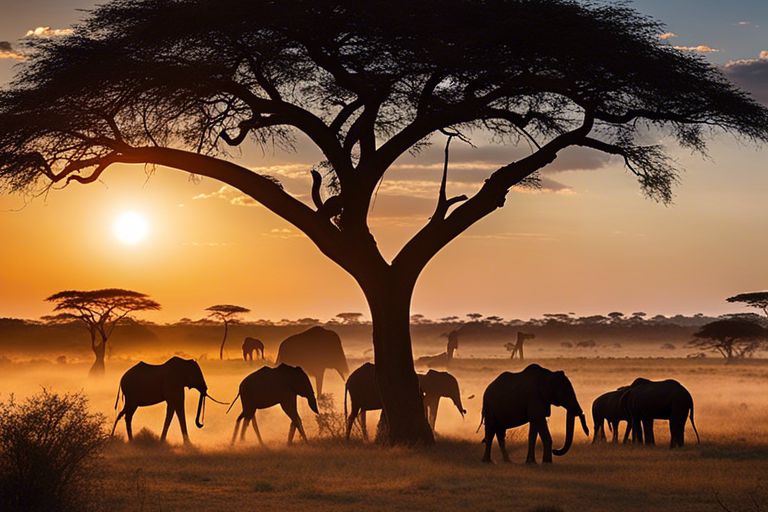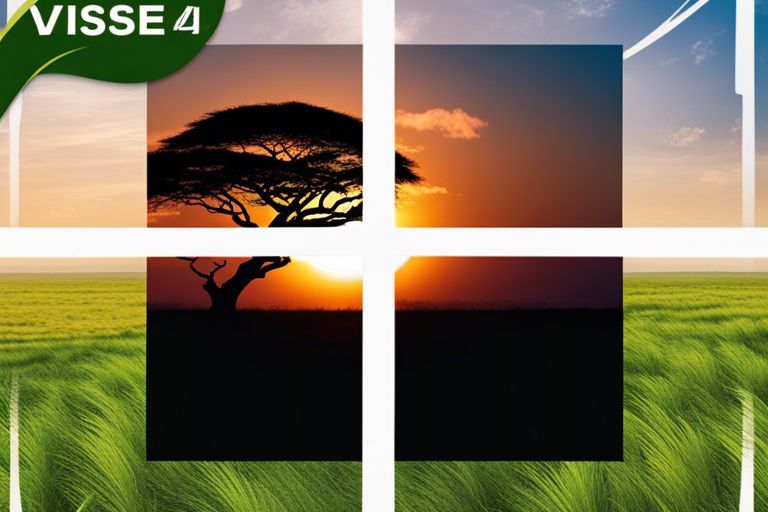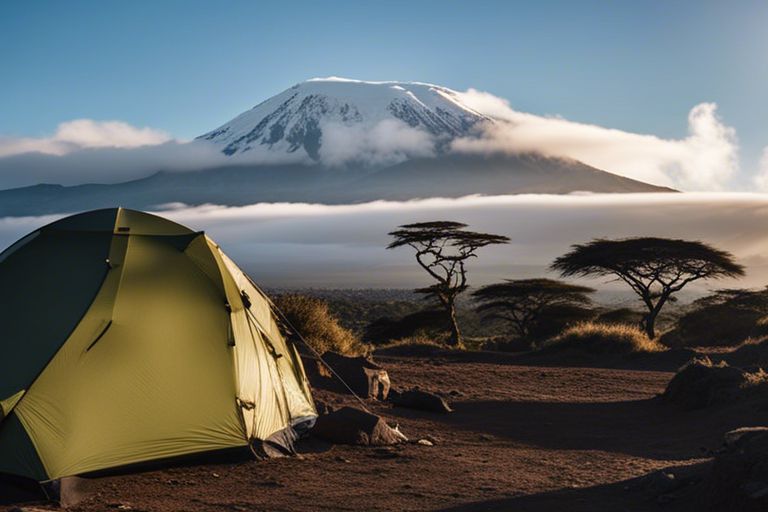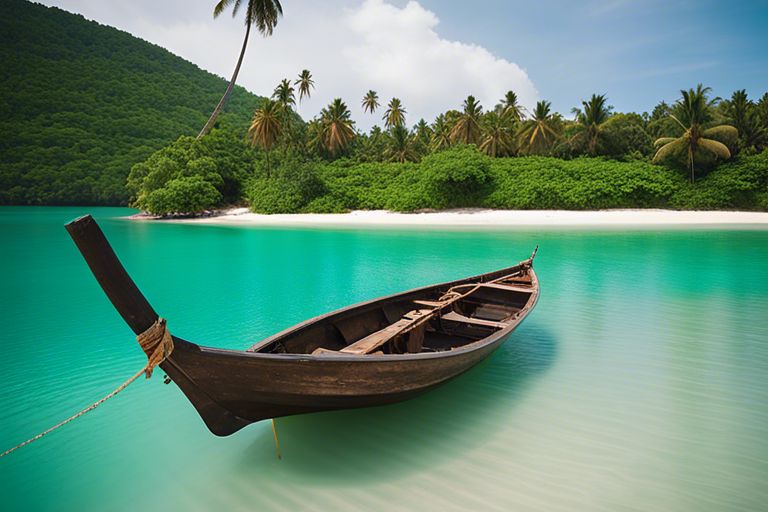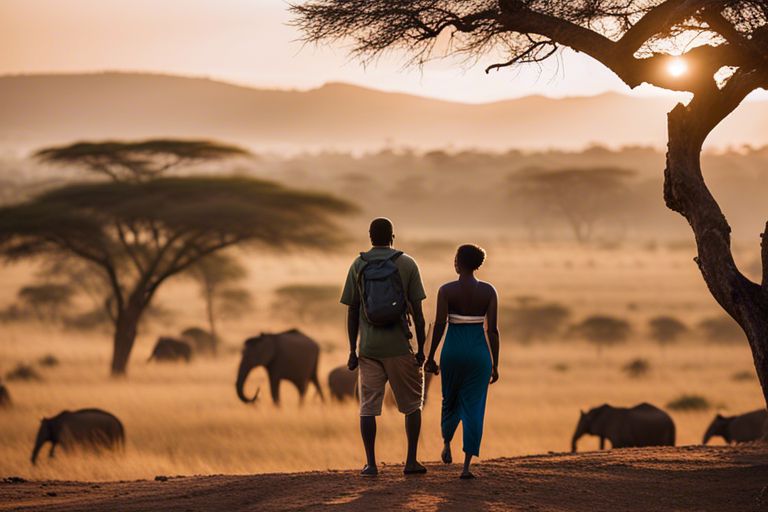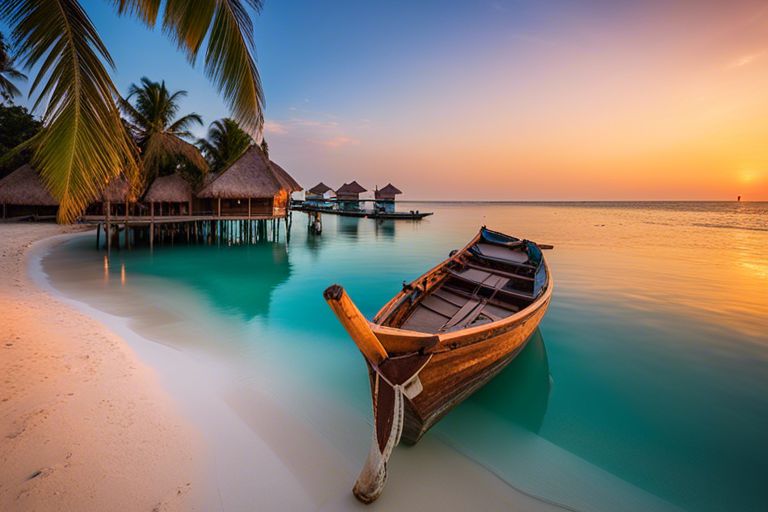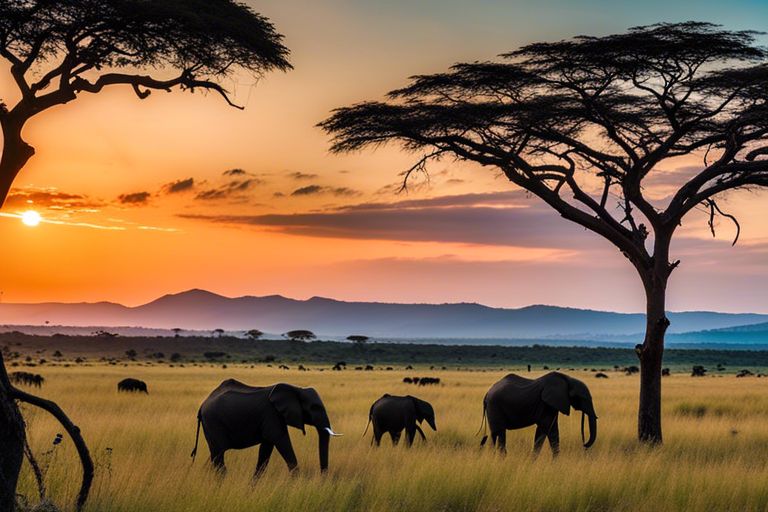Ultimate Guide To Choosing The Best Safari In Tanzania
Just imagine launching on a thrilling adventure through the vast plains of Tanzania, surrounded by breathtaking wildlife and stunning landscapes – this is what a safari in Tanzania has to offer. Planning the perfect safari experience can be overwhelming with the plethora of options available. In this comprehensive guide, we will walk you through everything you need to know to choose the best safari in Tanzania, from selecting the right national parks to deciding on the type of accommodation that suits your preferences. Let’s dive in and ensure your Tanzanian safari is an unforgettable journey filled with unforgettable moments and awe-inspiring encounters with nature’s finest.
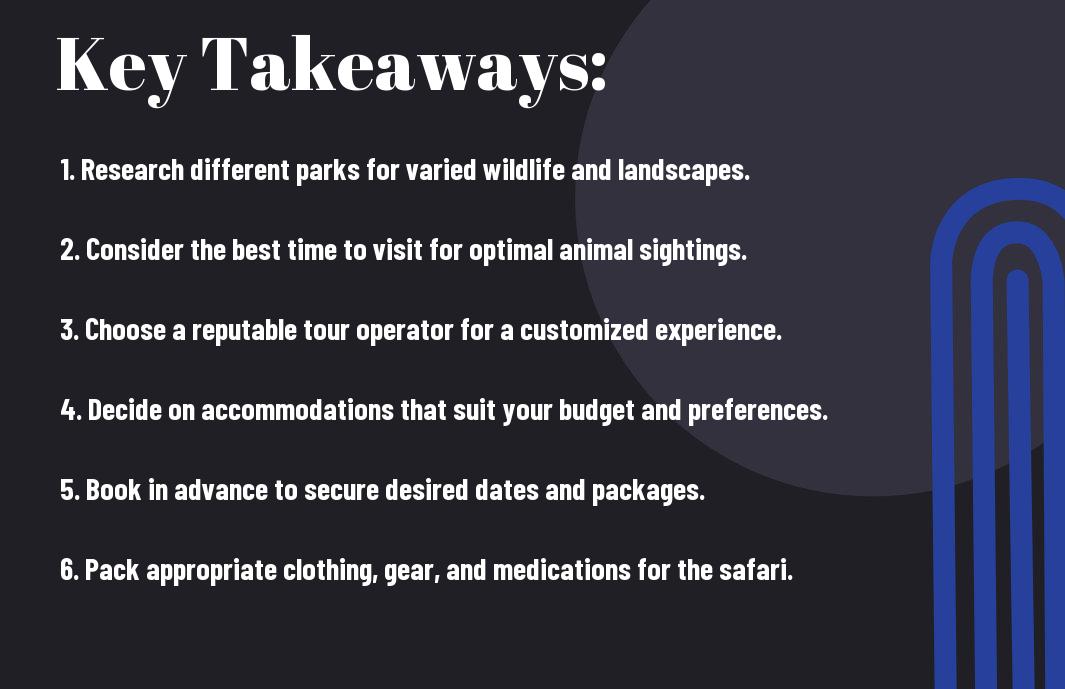
Understanding the Different Types of Safaris
Some of the most important factors to consider when choosing a safari in Tanzania are the type of experience you are looking for. Understanding the different types of safaris available can help you make an informed decision that best suits your preferences. Whether you are interested in wildlife photography, adventure, or cultural immersion, there is a safari experience tailored to meet your needs.
| 1. Photographic Safaris | 2. Walking and Trekking Safaris |
| 3. Game Drives Safaris | 4. Balloon Safaris |
| 5. Bird Watching Safaris | 6. Cultural Safaris |
| 7. Family Safaris | 8. Luxury Safaris |
| 9. Budget Safaris | 10. Private Safaris |
Photographic Safaris
Safaris focused on photography offer enthusiasts the opportunity to capture stunning wildlife and landscapes through their lens. Professional guides accompany photographers to the best locations for capturing memorable shots, providing valuable insights and tips along the way. Whether you are a novice or seasoned photographer, a photographic safari in Tanzania promises breathtaking moments that will last a lifetime.
Walking and Trekking Safaris
To experience the wilderness up close and personal, walking and trekking safaris are the way to go. These safaris allow you to immerse yourself in nature, taking in the sights, sounds, and smells of the African bush on foot. It is a more intimate and adventurous way to explore the beauty of Tanzania’s national parks and reserves, offering a truly unique safari experience for those seeking a deeper connection with the environment.
Key Safari Destinations in Tanzania
If you are planning a safari in Tanzania, it’s crucial to choose the right destinations to ensure an unforgettable experience. For a comprehensive guide on planning the perfect Tanzania safari, check out The Ultimate Guide to Planning a Tanzania Safari.
The Serengeti National Park
Tanzania’s Serengeti National Park is renowned for its vast plains, diverse wildlife, and the spectacular Great Migration. Witnessing thousands of wildebeest and zebras on the move is a once-in-a-lifetime experience that should not be missed. The park offers exceptional game viewing opportunities, including the chance to see the Big Five in their natural habitat.
Ngorongoro Conservation Area
With its unique landscape and abundant wildlife, the Ngorongoro Conservation Area is a must-visit safari destination in Tanzania. The area is home to the stunning Ngorongoro Crater, a natural marvel that supports a thriving ecosystem of diverse flora and fauna. Visitors can enjoy game drives in the crater and spot a variety of wildlife, including lions, elephants, and rhinos.
Safari enthusiasts will also appreciate the chance to witness the traditional Maasai tribes living in harmony with the wildlife in this UNESCO World Heritage Site.
Selous Game Reserve
The Selous Game Reserve is Africa’s largest game reserve and offers a more off-the-beaten-path safari experience in Tanzania. With its diverse landscapes, including woodlands, grasslands, and rivers, Selous is a paradise for birdwatchers and nature lovers. Visitors can enjoy boat safaris along the Rufiji River, spot rare species such as the African wild dog, and explore the reserve on guided walking safaris.
Tarangire National Park
Tarangire National Park is known for its large herds of elephants and iconic baobab trees, offering a unique safari experience in Tanzania. The park’s diverse habitats support a wide variety of wildlife, including lions, leopards, and diverse bird species. Visitors can enjoy game drives, walking safaris, and even hot air balloon rides to appreciate the park’s beauty from above.
Planning Your Safari Trip
Best Time of the Year to Go
Your safari experience greatly depends on the time of year you choose to visit Tanzania. The best time for wildlife viewing is during the dry season, from late June to October, when animals gather around water sources, offering prime opportunities for sightings.
Duration and Itinerary Considerations
For an optimal safari experience, consider a duration of at least 4-5 days. This allows you to visit multiple national parks and increase your chances of seeing a wide variety of wildlife in their natural habitats. A well-planned itinerary will ensure you make the most of your time in Tanzania.
For instance, combining the Serengeti for the Great Migration, Ngorongoro Crater for the densest population of predators in Africa, and Tarangire National Park for its large elephant herds can offer a diverse and unforgettable wildlife experience.
Accommodation Options
Itinerary flexibility is crucial when selecting accommodation for your safari. Choose between luxury lodges, tented camps, or budget-friendly options based on your comfort preferences and budget. Many lodges and camps offer stunning views and amenities that enhance your overall safari experience.
Considerations such as proximity to wildlife hotspots, level of comfort, and the type of experience you desire will help you narrow down the ideal accommodation options for your safari trip.
Packing Essentials
Trip importants for your safari include lightweight clothing, sturdy walking shoes, a hat, sunscreen, insect repellent, binoculars, and a camera to capture memorable moments. Be sure to pack layers for cool mornings and evenings, as well as a refillable water bottle to stay hydrated during your game drives.
Plus, don’t forget to bring any required medications, travel documents, and a sense of adventure to fully enjoy your safari experience in Tanzania.

Tips for a Responsible and Ethical Safari
Now, when commenceing on a safari in Tanzania, it is crucial to keep in mind the importance of responsible and ethical practices. Here are some key tips to ensure that your safari experience is not only enjoyable but also sustainable and respectful towards the environment and local communities:
- Follow wildlife interaction guidelines to minimize disturbance to animals and their habitats.
- Practice cultural sensitivity and consider the impact of your visit on local communities.
- Support environmental conservation efforts to help preserve the natural beauty of Tanzania for future generations.
This comprehensive Tanzania Safari Guide | Everything You Need to Know will provide you with more detailed information on how to make your safari experience both rewarding and responsible.
Wildlife Interaction Guidelines
Ethical wildlife interactions are necessary to protect the animals and their habitats. Avoid approaching animals too closely, feeding them, or disrupting their natural behavior. Respect their space and observe from a safe distance to minimize stress and potential harm to the wildlife.
Cultural Sensitivity and Community Impact
Cultural sensitivity plays a significant role in ensuring that your safari experience is respectful and positive for local communities. Be mindful of cultural norms, dress modestly, ask for permission before taking photographs, and support local businesses by purchasing handmade crafts or products directly from the community.
Understanding the cultural norms and traditions of the communities you visit can help foster meaningful interactions and contribute to sustainable tourism practices. By showing respect for local customs and traditions, you can help create a more enriching experience for both yourself and the communities you encounter.
Environmental Conservation Efforts
Impactful environmental conservation efforts are vital for the long-term sustainability of Tanzania’s diverse ecosystems. Consider staying in eco-friendly accommodations, supporting wildlife conservation projects, and reducing your carbon footprint during your safari. By choosing responsible tour operators and lodges that prioritize conservation, you can contribute to the protection of Tanzania’s natural resources and wildlife.
Understanding the interconnectedness of wildlife, communities, and the environment is key to promoting ethical and sustainable safari practices. By following these tips for a responsible and ethical safari, you can help preserve Tanzania’s rich biodiversity and cultural heritage for generations to come.
To wrap up
On the whole, choosing the best safari in Tanzania requires careful consideration of factors such as budget, desired wildlife sightings, travel dates, and personal preferences. By researching different parks, tour operators, accommodations, and activities, travelers can tailor their safari experience to make unforgettable memories. Whether opting for the classic Serengeti and Ngorongoro Crater or exploring off-the-beaten-path reserves like Ruaha or Selous, Tanzania offers a plethora of safari options for various interests and budgets. With this ultimate guide, travelers can confidently plan their dream safari adventure in Tanzania, ensuring an experience that is both memorable and rewarding.
FAQ
Q: Why choose Tanzania for a safari?
A: Tanzania offers diverse landscapes and wildlife, including the iconic Serengeti and Ngorongoro Crater, making it a premier safari destination.
Q: When is the best time to go on a safari in Tanzania?
A: The best time for a safari in Tanzania is during the dry season from June to October when wildlife viewing is at its peak due to animals gathering around water sources.
Q: What are the must-visit national parks in Tanzania for a safari?
A: Some of the must-visit national parks in Tanzania include the Serengeti, Ngorongoro Crater, Tarangire, and Lake Manyara for their abundance of wildlife and stunning landscapes.
Q: What type of accommodations are available for a safari in Tanzania?
A: Accommodation options in Tanzania range from luxury lodges and tented camps to budget-friendly campsites, providing something for every preference and budget.
Q: What wildlife can I expect to see on a safari in Tanzania?
A: Tanzania is home to a wide variety of wildlife, including the Big Five (lion, elephant, buffalo, leopard, rhinoceros), wildebeests, zebras, giraffes, and numerous bird species, offering a diverse safari experience.

